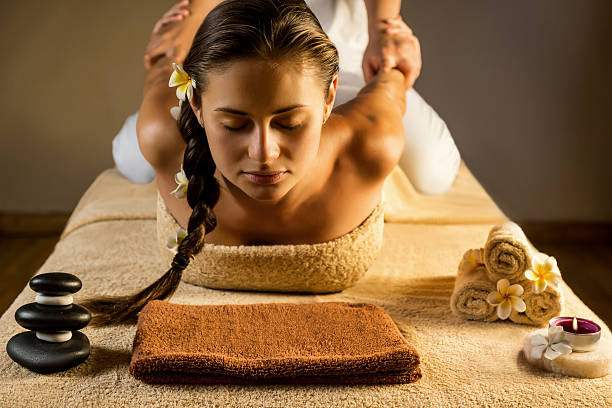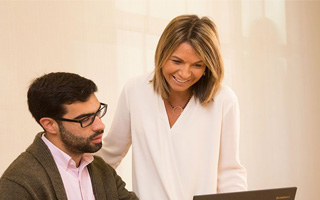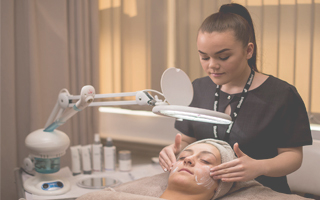Ispaa Management courses are designed to give participants the deeper knowledge to build the business from the grassroots level. It includes project planning and execution, investment and finance, recruitment and training, day today managerial tasks etc. Another area of focus is how to increase revenue by connecting key areas; Sales & Marketing and Finance. Students will come away being able to manage their department and resources better through an enhanced understanding of current Sales and Marketing techniques that are specifically suited to the Spa environment and also through an appreciation of finance and budgeting. These skills will enable the participants to engage more fully in the business and bring additional revenue to the bottom line.This course is vital for businesses looking to gain an edge in the increasingly competitive wellness Industry. Course Highlights: Unique spa concept to makes your Spa different. The connection between Finance and Sales & Marketing in order to create plans that get results. Read, analyze and understand a P&L statement for effective budgeting and accurate forecasting. Financial language to be able to effectively communicate with the Finance Director. The connection between understanding the Spa business and leading effective teams. Each Participant would be capable of managing the spa division with full confidence. Hundreds of tools to improve the on going projects in quality and profitability standards.
Thai massage (Level I)
Traditional Thai massage, Thai Yoga Massage, or Thai massage are all different levels to describe a highly physical, hands on branch of traditional thai medicine. Other branches includes use of herbs and steam baths. However it is widely accepted method of assited body workout to generate deep relaxation by improving musclular endurance and joint mobility. The popularity of thai massage increasing day by day all over the world and people from every part of the world flooding towards thailand to experience authentic thai massage and to learn the authentic way of performing thai massage.
The History of Thai massage
Traditional Thai massage has its roots in India, in the Indian Yoga tradition and ayurveda. The Bhuddist monks, who travelled to India, find the yoga methods and ayurvedic treatment methods. Had made some changes and introduced in Thailand as a form of Thai massage. And it happened around 2000 Years ago. These monks have been invited by the Mon Dynasty the rulers of northern Thailand and created thai massage as part of traditional thai medicine ever since.
The man called Jivaka Kumar Bhaccha who is revered and honored as father of traditional Thai medicine. His name appears in ancient Bhuddist scriptures as he was a physian to the Bhuddha Himself and to his spiritual community, around 2500 Years ago. Consequently, Jivaka Kumar Bhaccha becomes closely associated with what is now known as traditional Thai massage. In Thailand today practitioners still offer a prayer to him in thanks before they give each massage.
Detailed knowledge about ways in which practice of thai massage developed over the centuries is limited, as most of the historical texts dealing with its theoritical background were destroyed by a burmese invasion of the old capital, Ayuthia, in 1767. However some remants of this text survived and they formed the basis for carvings that can be seen today on the walls of the Phra Chetuphon Temple(known as wat pho) in Bangkok.
The Practise of Thai massage
According to easter philosophy underlying thai massage, the body is made up of an interconnecting web of energy lines through which prana, flows life energy. This is the force that supports and maintains all the vital functions of the body. It permeats all life and sustains all living things. It is in the air that we breath and the food that we eat. When the energy flows freely we enjoy good mental, physical and spiritual health. If the energy lines become blocked, and the flow of prana is interrupted, it causes disruption and imbalance throughout the system. So, in Thai massage, practitioners stimulate energy lines by using pressure and passive stretches to maintain a free flow of energy through the whole body.
Thai masnsage level- I
Thai massage level one is the very basic level in which the student learns the basic principles of the thai massage. In this section students learn about the Energy system of body, different energy lines, pressure application methods, body alignment, breathing pattern and so on.
Benefits of Thai massage
The overall benefits of thai massage gives wide popularity all over the world. It benefits both the reciever and the practioner as both are practising together. For the reciever it improves the joint mobility and the musclular endurance. Same time deep sense of relaxation as well. The need of touch that is essential for every living being also will be fullfilled through thai massage. A person who is not willing to do strainful exercise stretches for yoga aasnas can choose thai massage as a good option. Since, the practitioner takes the mental and physical strain, while the reciever is relaxing. Same time they recieve all benefits of physical exercise. And when a person goes for regular routine of thai massage the reluctance to the exercise will reduce day by day and eventually become a sportive person also will start enjoying physical exercise routines. It happens because the body concentration will change as a result of thai massage practice.



